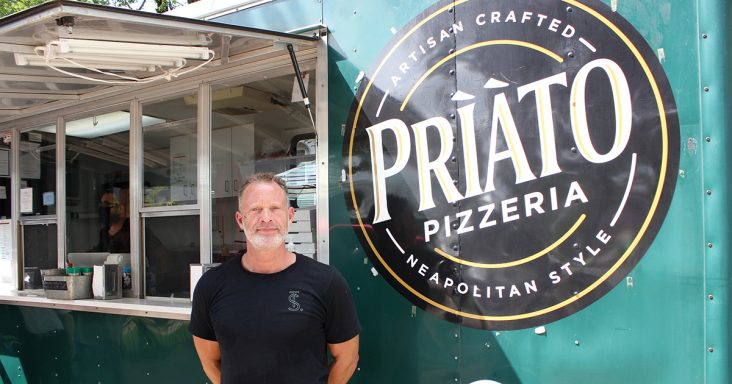Food trucks adapting to COVID-19 pandemic
by September 28, 2020 12:04 pm 1,217 views

Jeff Jones, owner of food truck Priato Pizzeria in Bentonville, said sales were up 45% in August, from the same month in 2019. Food trucks have more flexibility to operate during the COVID-19 pandemic.
COVID-19 has changed how people dine out, and that’s especially affected restaurants initially ordered to cease dine-in service to mitigate the spread of the virus. But some foodservice businesses, such as food trucks, have had more flexibility to operate.
Between 2013 and 2018, the number of food truck businesses nearly doubled from 3,281 to 5,970, according to the U.S. Census Bureau. In 2018, these businesses employed 16,210 workers, with an annual payroll of $320.6 million.
California has the most food truck businesses at 753, while South Dakota has the fewest at 11.
Food truck sales increased by 79% between 2012 and 2017, rising from $660.5 million to $1.2 billion, according to the Census Bureau. The average sales per food truck were $226,291, and average sales per food truck employee were $86,212 in 2017.
Sales for food truck Priato Pizzeria in downtown Bentonville were up double-digits in 2020 through mid-March, owner Jeff Jones said. Sales declined by about 40% between April and mid-July. Sales started to rise by the end of July, and in August, sales increased by 45%, from the same month in 2019.
May is typically the pizzeria’s busiest month, but sales took a hit that month after the Bentonville Film Festival didn’t happen as planned and the splash pad across the street was closed.
“We’re kind of coming back,” Jones said. “We’re down 12% year-to-date, so I feel it could be worse. But at the same time, last year was the worst year that I’ve ever had.”
Of the 5,970 food truck businesses nationwide, 4,979 had fewer than five employees. These smallest businesses employed the most workers, 5,187 out of the total 16,210 workers, and paid the best, with an average annual payroll per employee at $25,712 in 2018.
Priato Pizzeria has two full-time and two part-time employees and was established five years ago.
